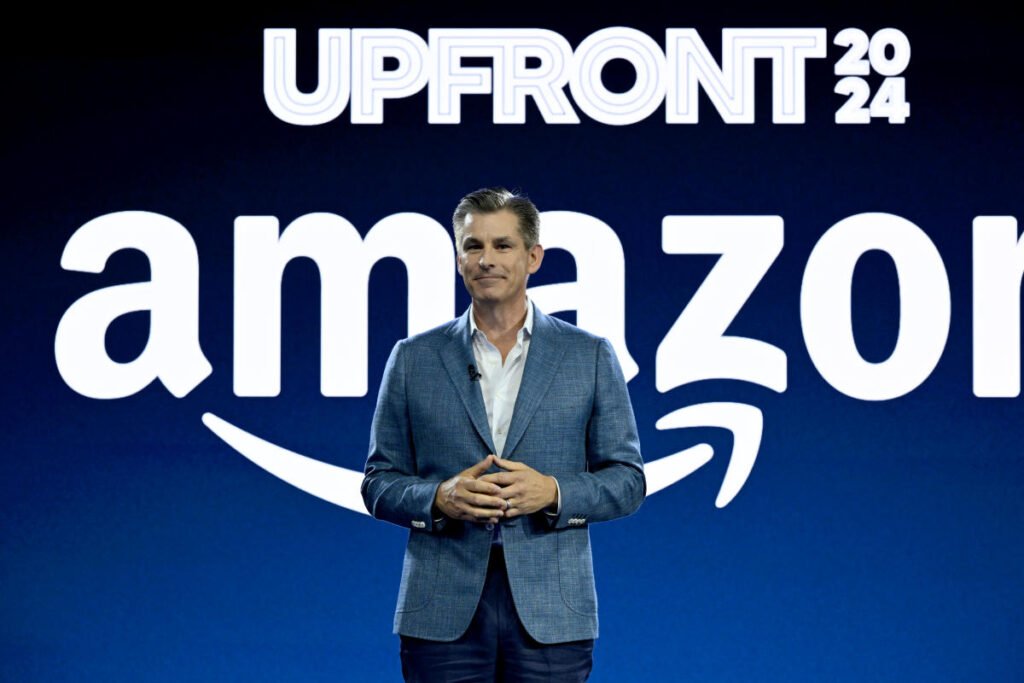Amazon (AMZN) entered the ad-supported streaming market in January by making all Prime Video subscriptions ad-supported, and just six months later, the tech giant’s impact is already being felt.
Prime Video subscriptions will automatically default to the ad-supported plan at the current monthly rate of $14.99 for Prime shipping members and $8.99 for non-Prime members or those who only subscribe to the standalone video service, with the monthly price increasing by $3 for subscribers who want the ad-free version.
Amazon’s entry builds on the presence of Netflix (NFLX) and Disney (DIS), which introduced their respective ad tiers in the second half of 2022. This means an already accelerating expansion of ad-supported options for consumers — and potential ad buyers.
“There’s no question that there’s an oversupply in the market,” Rita Ferro, Disney’s president of global advertising, told Yahoo Finance earlier this week at Cannes Lions, the annual event for the global advertising and communications industry.
The bottom line: Companies like Disney will have to work harder than ever to attract advertisers to their platforms.
MoffettNathanson estimates that Prime Video could add more than 50 billion impressions to the connected TV (CTV) market this year, a number that “will likely dwarf many of the smaller players in the space” as the increase in inventory simultaneously translates into lower ad prices.
“Amazon knows how to gain market share, and they know how to use price to gain market share,” said Mark Douglas, CEO of MNTN, an ad tech company that focuses on the CTV sector. “That’s one of the big things this week.” [at Cannes] “Amazon has been pretty aggressive in lowering prices.”
Ad buyers reportedly paid Amazon a CPM of $30 to $35 per thousand ad views. This low price has forced competitors to follow suit: Netflix has lowered its CPMs from the $39 to $45 range last summer to roughly $29 to $35 today, according to The Wall Street Journal.
“Why they can do that, and why others in the industry have a problem with it, is because Amazon [a] “They have a big search advertising business and they can bring those advertisers to Prime,” Douglas said. “They can monetize their content more effectively and bring down prices. That’s the main dynamic that’s working right now.”
“It just raises the stakes.”
Amazon reaches the broadest audience of any streaming platform thanks to its Prime streaming service and its ability to keep consumers within its ecosystem, which makes it easier for the company to protect customer data and improve its targeting capabilities, both of which are attractive to advertisers.
“It just increases the risk,” Macquarie Bank analyst Tim Nolen previously told Yahoo Finance when asked about Amazon’s ad push. “Everyone is faced with new competition and a lot of inventory to fight over.”
But there may be ample stock available, especially as more consumers choose ad-supported streaming options.
According to subscription analytics platform Antenna, which released its second-quarter “State of Subscriptions” report on June 13, more users are opting for cheaper ad plans, with 38% of all accounts now opting for the ad tier.
These trends continue to drive ad buyers’ shift from linear to streaming, with MoffettNathanson predicting total video-on-demand ad revenue will grow 33% this year and 17% by 2023.
“Platforms with the most inventory, the least essential content and the least targeting capabilities are most at risk,” the company said.
But Douglas believes Amazon’s increased competitiveness will force others in the industry to adapt.
“A transformation is underway,” the executive said, explaining that Amazon and other big tech companies are focused on gaining overall market share rather than securing the highest price for a 30-second ad, which has been the traditional standard for media buying.
“The rest of the industry is not well-positioned to deal with that, and that’s the problem,” he said. “That said, I don’t see Amazon as a long-term threat that will overwhelm others. In the short term, it’s just accelerating a trend that needed to happen anyway.”
But he warned that “it will need to think like a technology company, not just a media company.”
Alexandra Canal She is a senior reporter at Yahoo Finance. Follow her on X translator, LinkedIn, Please email me at alexandra.canal@yahoofinance.com.
For the latest stock market news and in-depth analysis, including stock-moving events, click here.
Read the latest financial and business news from Yahoo Finance

